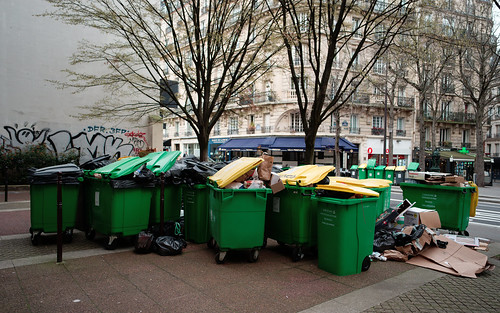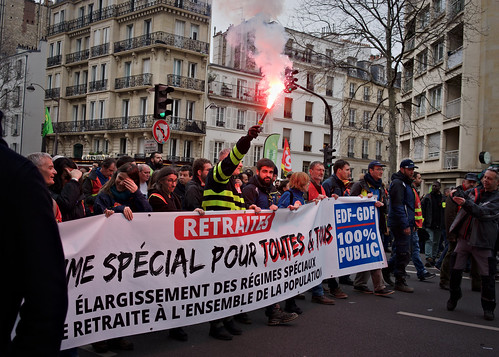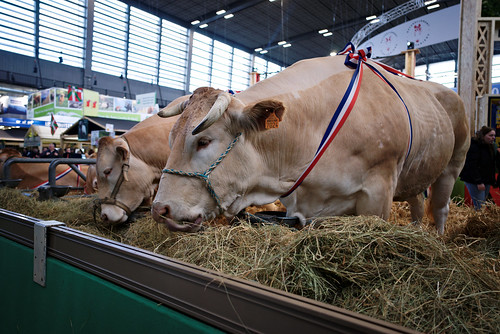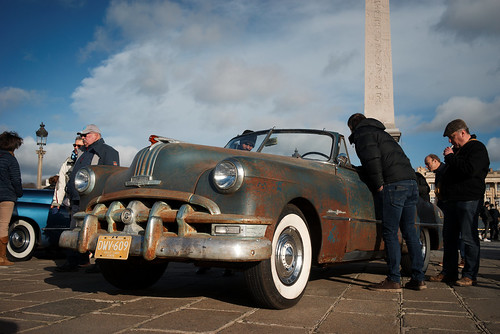Whenever I'm around and la traversée (winter or summer) is running I try my best to get down to see the event.
One of the difficult things about living where I do is that it's not easy for me to find creative people to work with. Looking through my portraiture/people work I realize most of it was generated over a decade ago.
The city I live in feels like it's too expensive for our economically under-advantaged creatives. Additionally, those who might be creative have a rather curious way of presenting themselves. They remain in hiding, as it were. Few risks are ever taken. It's just the nature of the culture, I guess, because I don't see this in Spain, or England or Italy.
Not having the kind of creative access I used to when I lived in the US has led me to go in search of other subjects. The car is one thing that I've taken a much stronger interest in. It turns out, old cars are something of a passion for the locals. They quickly became an easier target for me and it seems as if there's often something interesting and colorful going on.
I enjoy planning my photographic automobile adventures. I enjoy thinking about the approach I'll use. I enjoy reviewing the works of some of my favorite photographers. I enjoy searching for new (to me) paths to photographically wander down. It give me something to look forward to.
In late July 2023 la traversee de Paris estivale was run with 700+ old vehicles participating in the event. After thinking long and hard, I decided that this time I wanted to explore flipping the idea of automobile on its head.
Most of the time it's the cars that are in motion. It's why we own them, right? They get us from one place to another. I've done a bit of work attempting to express that.
I'm not sure how it came to me, but what if it were the cars that were at rest and what if the environment around them was what was in motion? That was one of the ideas I wanted to explore.
Have a squint at this. It shares what I was after.
Looking a little more deeply at this work of mine, I find I'm enjoying several things about it that for me "work" on several different levels.
The Alfa Romeo Spyder Veloce is needle sharp. The red paint is pure and rich. The wheels are as still as can be. Automobile as sculpture. And what a beautiful sculpture it is (to me, at least).
There is a passing bus that gives some part of the scene a sense of motion. I can see through the windows of the bus to catch glimpses of street lamps and other architecture. The effect is fun and unexpected.
There is a hint of a reflection of the Alfa in the passing bus, too. The reflection looks to me as if the the spirit of the little Alfa is in motion, dreaming of a time soon to come.
The ancient Egyptian obélisque is as still as the car. It stands there, timeless, watching the passing histories being made. The Alfa and obélisque feel like anchors in a world filled with motion.
Then there are the color relationships. The blues along the side of the blurred bus are very similar to the blue on the following bus. There's just a hint of blue in the sky, too, where the clouds are ever so slightly parted.
More subtly, the green tinted windows of the first bus seem to announce the arrival the greens on the second. The green of the insurance tag in the window of the Alfa are similar to the greens of la traversee plaque seen just behind the windshield wipers.
Which leads, of course, quite obviously to the red. There's the red of the car. There's the hint of red in the reflection of the Alfa on the bus. There's the red hat of the driver. And there's the red in the following double-decker bus behind everything. Red seems to announce the Italian nature of the Alfa.
The photograph was done in one "take." One exposure. This is what I was looking for. I feel there is a certain success after spending so much time plotting and planning. I find it all to be absolutely delightful.












